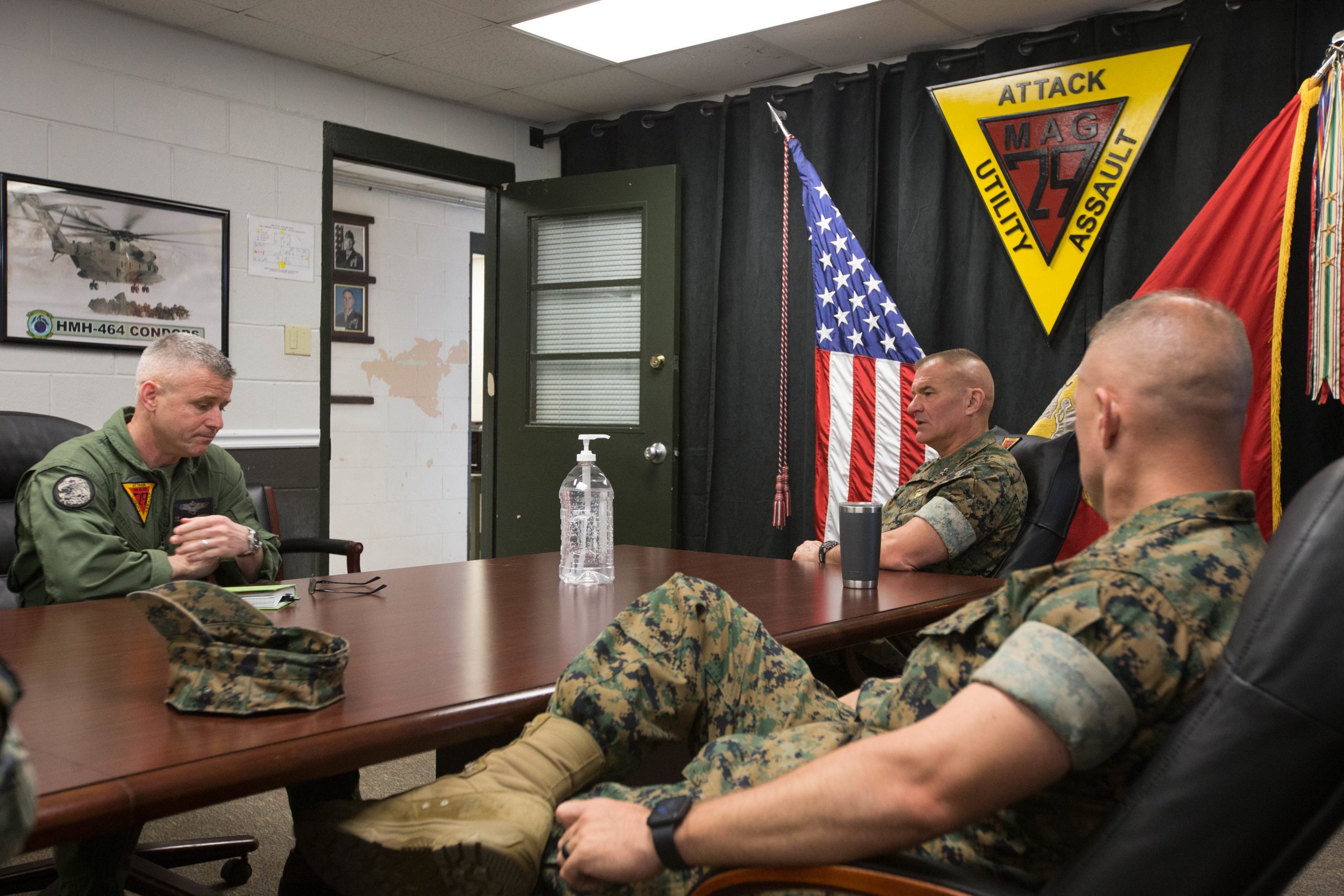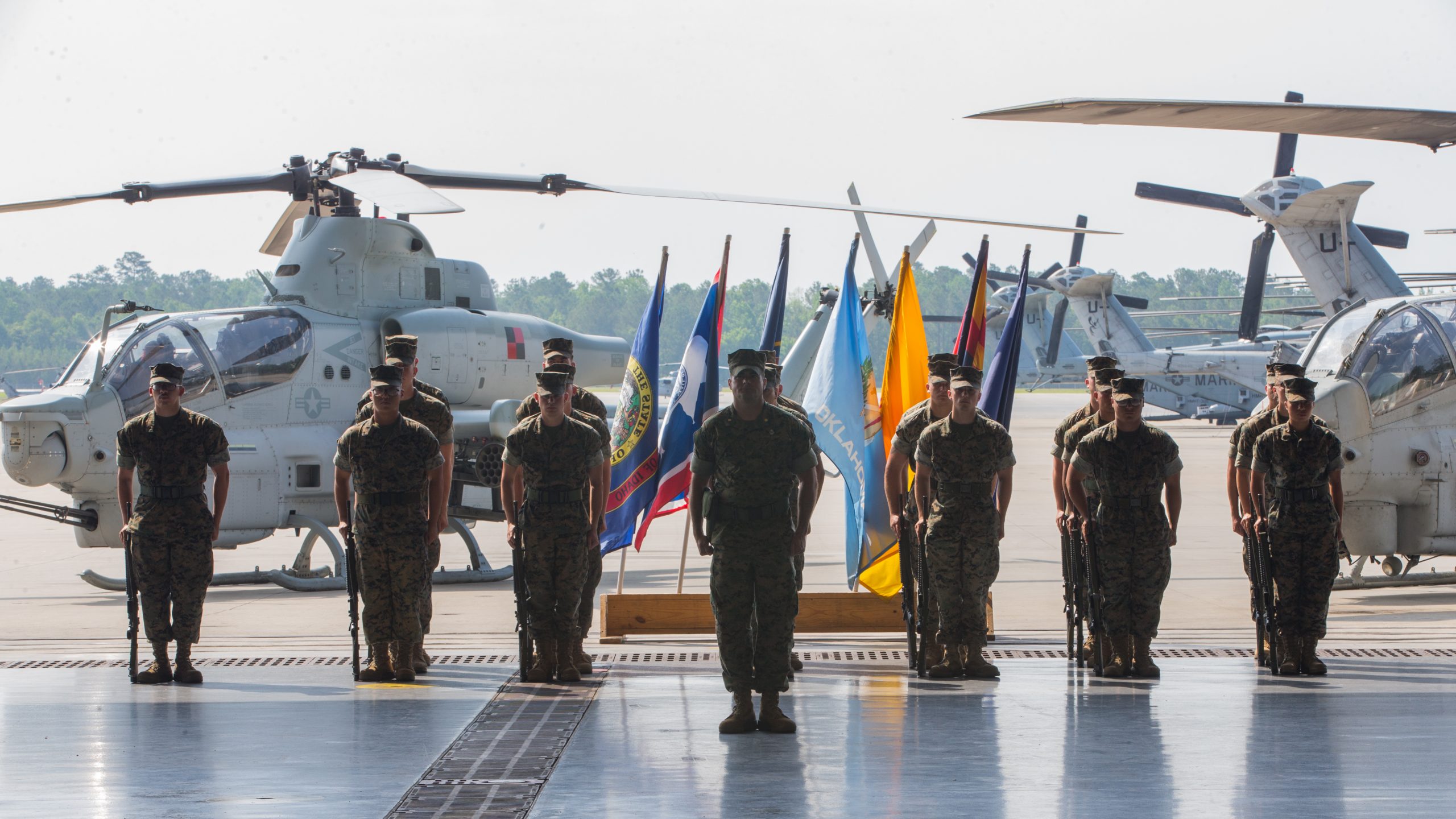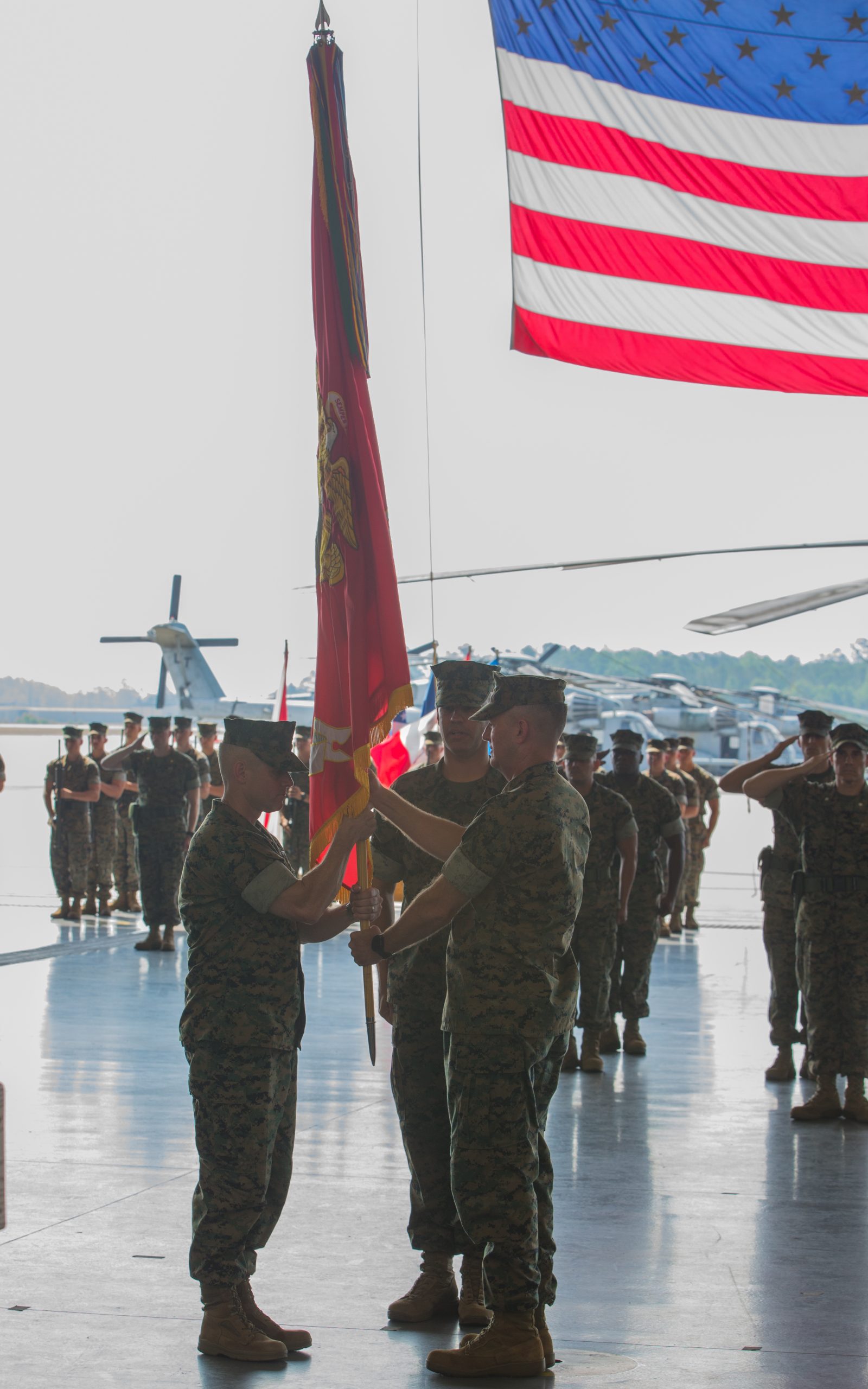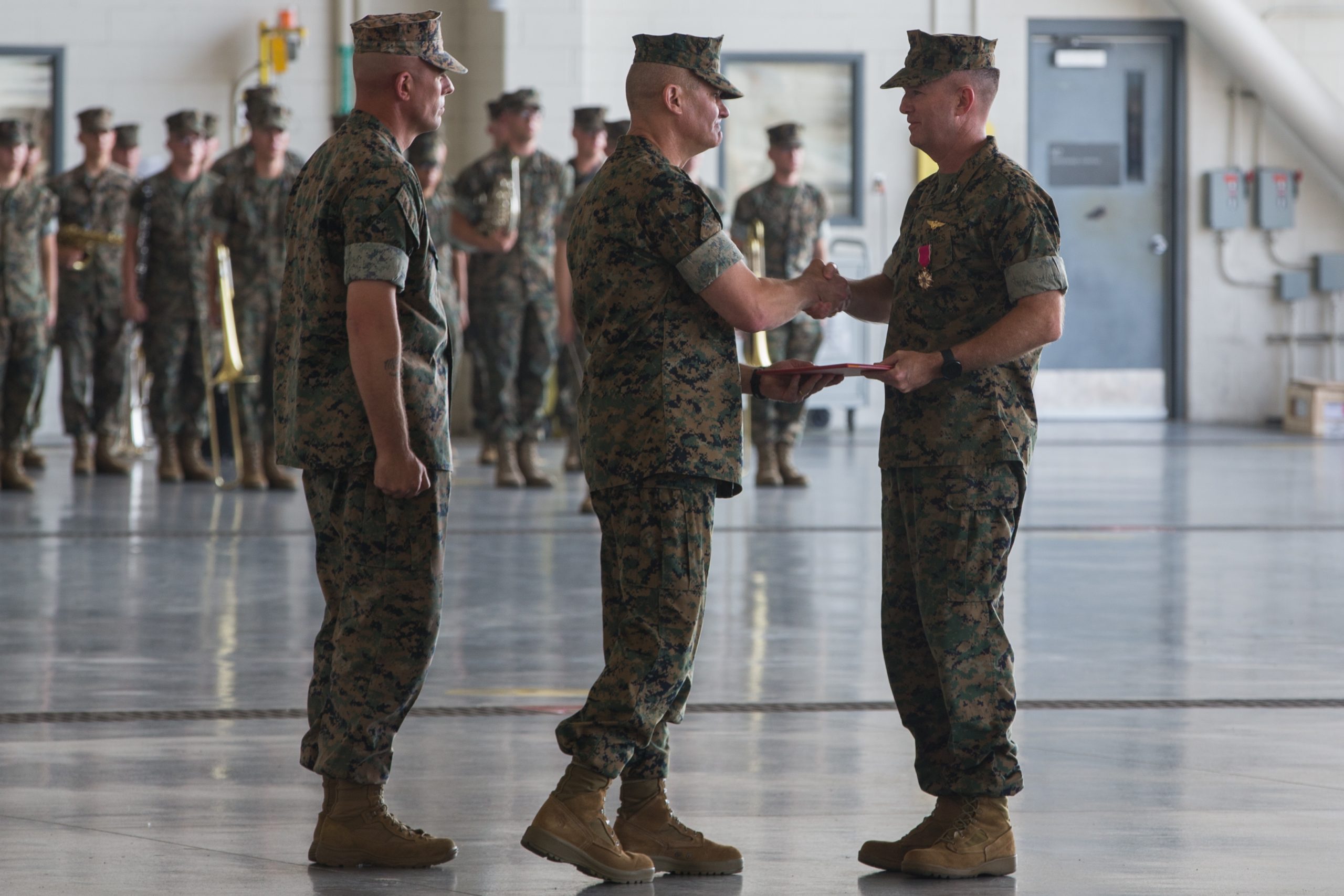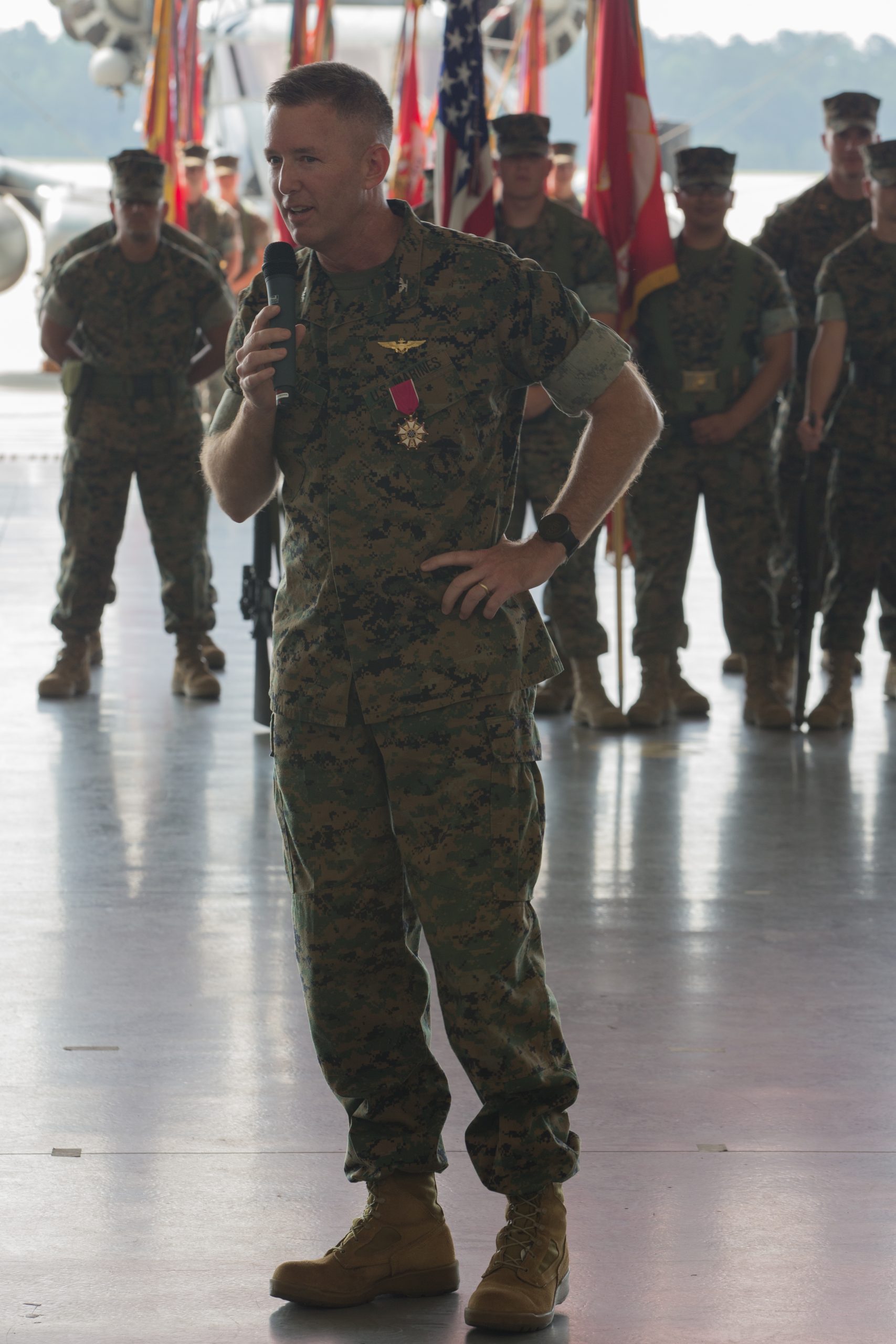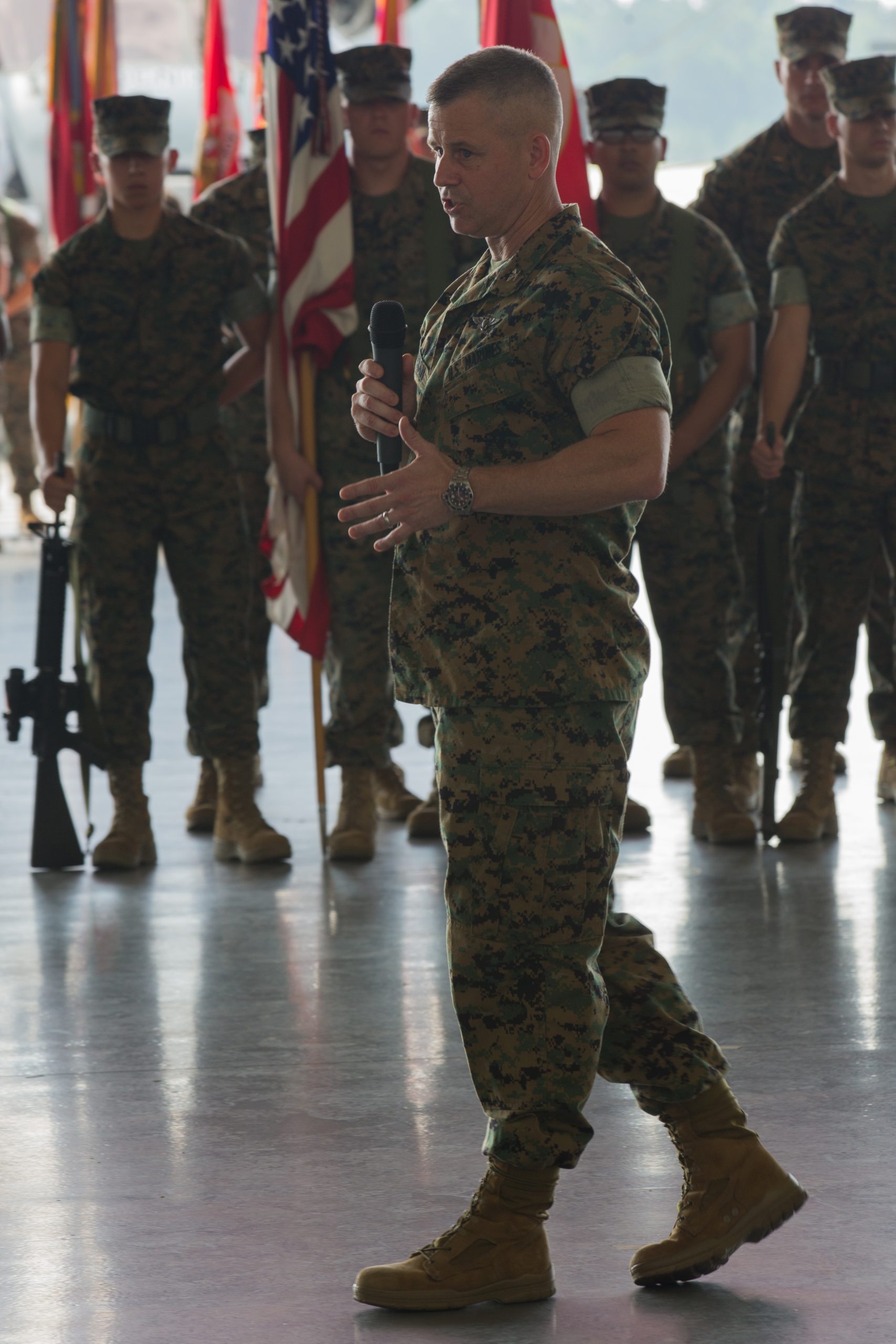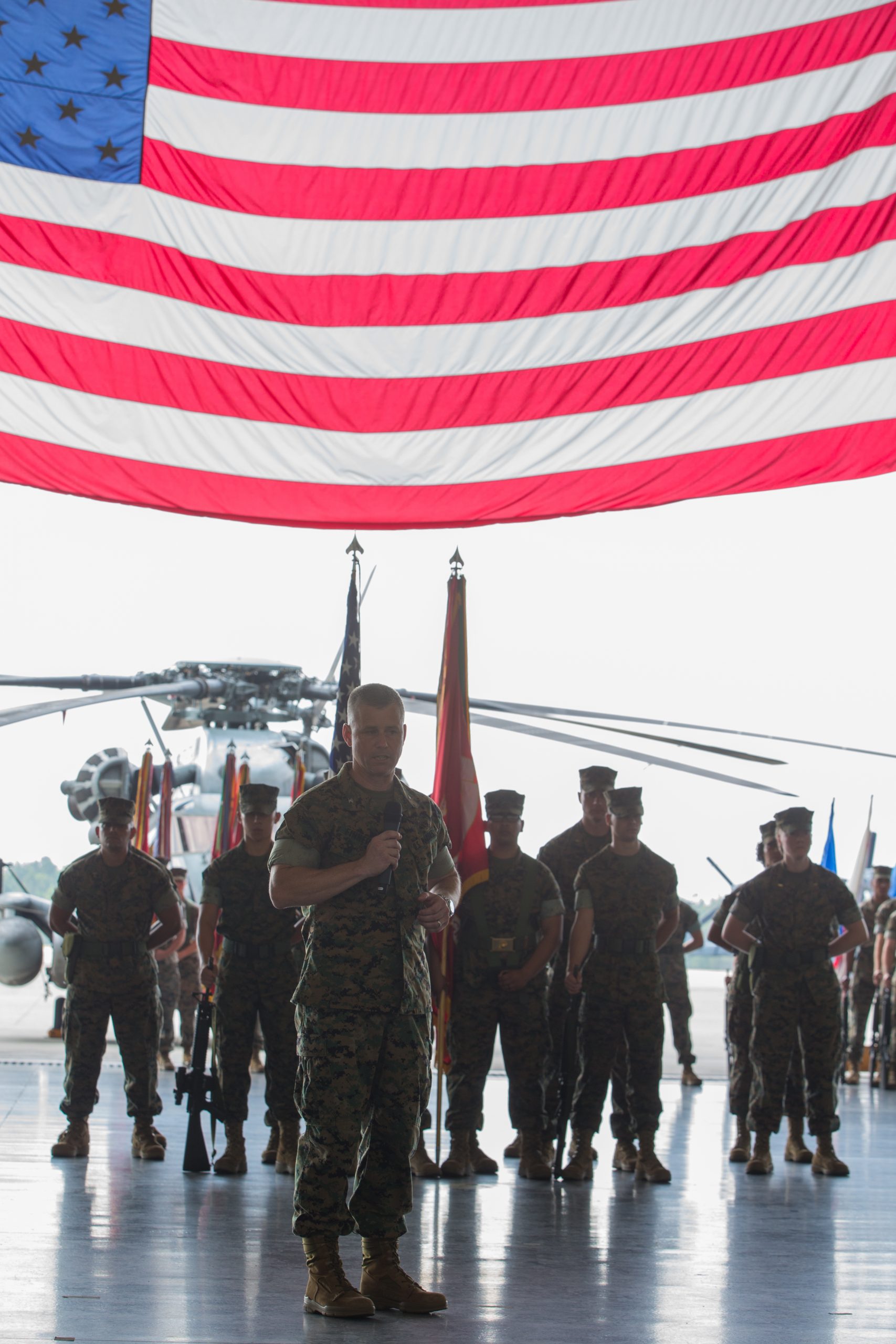By Robbin Laird
During my visit to 2nd MAW during the first week of December, I had a chance to visit MAG-29, with regard to both the CH-53 and H-1 units. Then I had a chance to discuss the way ahead for the assault force with the Commanding Officer of MAG-29, Col. Robert Finneran.
It would hardly surprise you to learn that the CO was a very experienced combat aviator who had worked on assault operations for a significant period of time, including tours in Iraq and Afghanistan and at MAWTS-1. He also served at SOCOM where he broadened his experience as well.
His own operational experience is associated with the AH-1W and AH-1Z, but as the CO of MAG-29, he serves as the Naval Aviation Enterprise’s fleet lead for the CH-53. This role includes the transition to the CH-53K. Later in my visit I would have a chance to “fly” the CH-53K in the simulator at New River.
We discussed three major issues: the CH-53K, the H-1 transition with digital interoperability, and the key role which Marine Corps aircraft play in mobile or expeditionary basing, or as he put it: “They are key elements ensuring that a distributed force is integrable, rather than being dispersed and isolated.”
We started by discussing the CH-53K and I asked him a direct question: Why is it so hard to explain how different the K is from the E? It is indeed so different that I recently wrote an article suggesting if they had named the aircraft the CH-55, people might get the point of how different it is.
Col. Finneran: “It starts with the silhouette of the two aircraft. They are very similar, but that is about it. The Kilo [CH-53K] is a generational leap in technology. It is a completely different airplane as far as capabilities and technology. But because it is for now a Marine Corps-only aircraft, there is no widespread recognition in the joint force of how different the aircraft is and what its impact will be.”
The digital capabilities of the aircraft certainly will enhance the situational awareness of the combat team, and its speed and range provide a significant advantage for force insertion.
“Anything we can do to enhance the situational awareness for the pilots, and take the workload off of them, allows them to focus on their mission. And mastering the aircraft in terms of flying will be fairly easy for the converting CH-53E pilots, but for the CH-53K generation, they will need learn how to manage all of the information that can be worked in that aircraft to enhance situational awareness and maximize its utility for the mission.”
He also argued that the CH-53K will affect risk calculus for force insertion as well. “With the aerial refueling capability of the CH-53, we can extend range and move a force and needed sustainment quickly and across great distances. This provides both the Marine Corps and the Joint Force Commander flexibility and complicates the problem for any adversary.”
We also discussed the coming of digital interoperability to the H-1 family and how significant he saw that, notably as the Marines focused on integration with the US Navy.
“We’re in the early stages of talking to the Seahawk Weapons Schools, both the MH-60S and MH-60R, to figure out how we can find complementary ways to employ our airframes.
“We bring a lot to the table for maritime operations, notably in terms of the weapons we carry on the Viper, and we need to figure how best to integrate that capability with the maritime force.”
“Once we’re networked and we can become part of the maritime kill chain, there’s a lot that this airframe can bring to bear in the role of both sea control and sea denial. I just don’t think we’ve explored it enough, and we’re in the early stages of taking a look at that.
“Because it is significant, what we bring from a weapons standpoint to the maritime domain, I think it’s really on us to explore how we can expand our operational reach in that domain.”
But as the Marine Corps focuses its attention on naval integration, a key part of that effort is upon working mobile, multiple and expeditionary basing, and how to do that with the current force as the force transforms as well. Obviously, a key challenge is having effective logistical connectors.
As Col. Finneran put it: “Logistical connectors are key to expeditionary basing. For example, the CH-53E and then the CH-53K can provide crucial support as they can bring fuel to an expeditionary base directly, rather than having to work through a series of basing locations.
“Fuel is certainly critical to distributed operations and our heavy lift helicopter is a key enabler, and frankly, I only see it increasing in importance to such operations. I don’t see how the force goes and does any of the new operational concepts without that capability.”
With regard to risk mitigation or being “risk worthy” as it pertains to distributed operations, Col. Finneran argued that the force under his command is clearly suited to that mission challenge or requirement.
With the attack utility team which the Viper and Venom create and with the heavy lift capability of the CH-53 family, the time to maneuver to get the desired combat effect is low compared to slower paced basing enablement methods. And it is sustainable as well with regard to bringing what is need to the mission, rather than depending upon ship-based support in an expeditionary basing maritime environment.
He added, the CH-53K versus the CH-53E provides “a lot more options” for this kind of scenario based on performance improvements in terms of range and payload.
MAG-29, along with MAWTS-1, are working on new Tactics Techniques and Procedures (TTPs) to maximize their capability to deliver the evolving basing capability and the kind of combat effect desired for sea control and sea denial. My visits to MAWTS-1 and to NAWDC this year certainly underscore this shift as well.
Col. Finneran concluded: “If we really want to be risk worthy, and we really want to challenge the risk calculus for our adversary, we’ve got to outmaneuver them in both time and space, and that is what my command is focused on delivering to the fight.”
Featured Photo: Col. Robert B. Finneran, left, converses with Maj. Gen. Karsten S. Heckl, center, and Sgt. Maj. Jacob M. Reiff, right, at Marine Corps Air Station New River, North Carolina, March 30, 2020.
The visit to the air station allowed leadership to check-in with Marines and address COVID-19 concerns. Heckl is the commanding general for 2nd Marine Aircraft Wing. Reiff is the sergeant major of 2nd MAW. Finneran is the commanding officer of Marine Aircraft Group 29, 2nd MAW. (U.S. Marine Corps photo by Cpl. Paige Stade).
See also, the following:
The View from 2nd Marine Air Wing: The Perspective of Major General Cederholm


